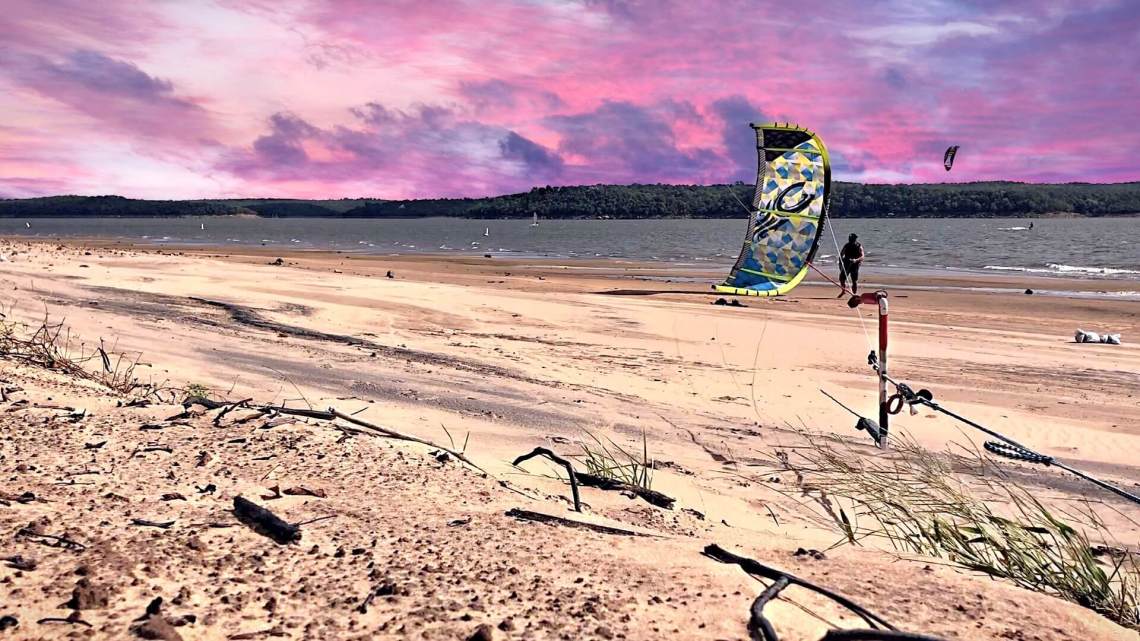
Although a very communal sport, there can be times during kitesurfing when there is no one else left on the beach to launch or land your kite; there is always a last person, waiting! These self launching/landing solo techniques are for just those occasions, and are a great way to get you out on the water or back in the car with a cup of tea in your hands.
A word of caution: we don’t recommend these techniques for beginner kiters, and if there is another kitesurfer at hand it is always best for them to launch and land your kite; two eyes are better then one to spot setup mistakes, and two pairs of hands are better than one in case something goes wrong. As always, give yourself plenty of room and be aware of any hazards, particularly downwind.
Launching
This is always my chosen method for self launch, and although there are others available, I consider this to be the safest.
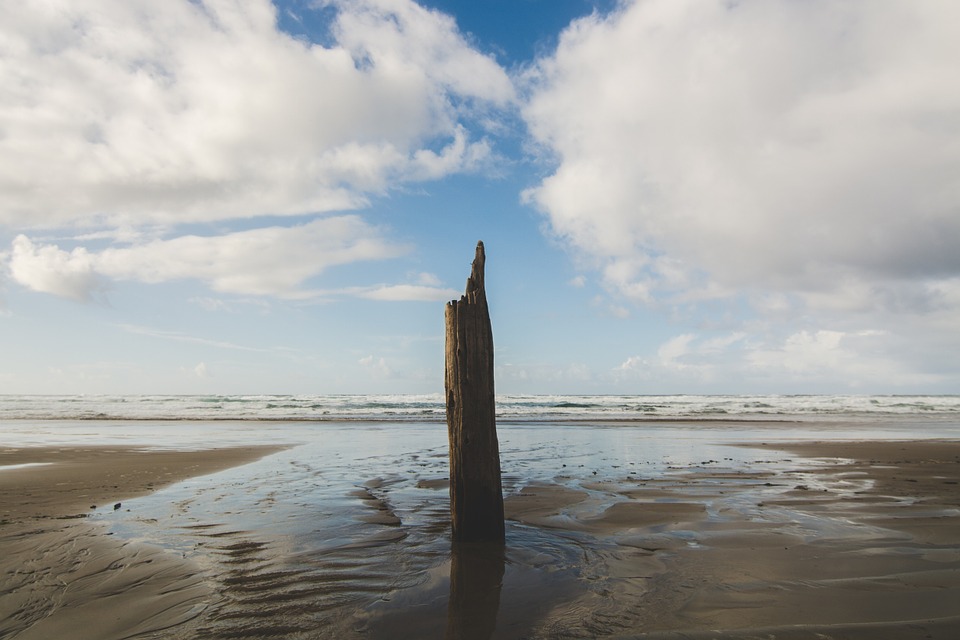
- Find a well anchored post on the beach that has plenty of empty space surrounding it – groyne uprights make a good choice.
- Using some sort of sort of strap, such as a ratchet strap, secure a caribena to the post. Alternatively you can use you safety leash (or a spare) by tying this around the post with a secure knot, though of course it depends on the length of it and the width of the post. This becomes your attachment point for the kite.
- Setup your kite as usual, taking your time to ensure that there are no crossed lines or other issues, and attach the chicken loop to the caribena/end of your safety leash. Make sure the kite is secured well downwind of the post.
- *Be sure the post is tall enough that if the leash or straps moves upwards it doesn’t slip off the top.
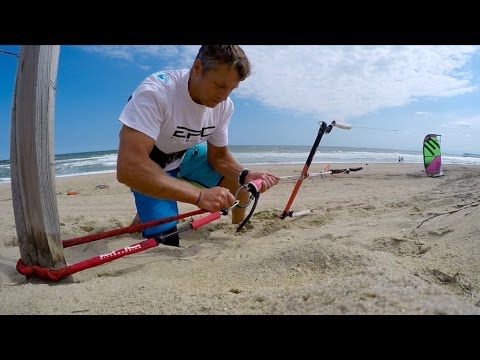
- Now, just as if you are launching someone else’s kite, walk the kite, with lines tight, around until it is on the side of the wind window. Eventually the canopy will fill with pressure and the lines will tighten. Hold the kite steady until it settles on the sand.
- Take time to check your lines are all good, and that the kite is happy to sit on the edge of the wind window. Once you’re happy it’s behaving, make your way over to the post, walking upwind of the kite, and attach the kite to your chicken loop. Remember! Install your safety leash if you used it for an anchor.
- Slowly bring your kite to 12, and get out there and rip it up!
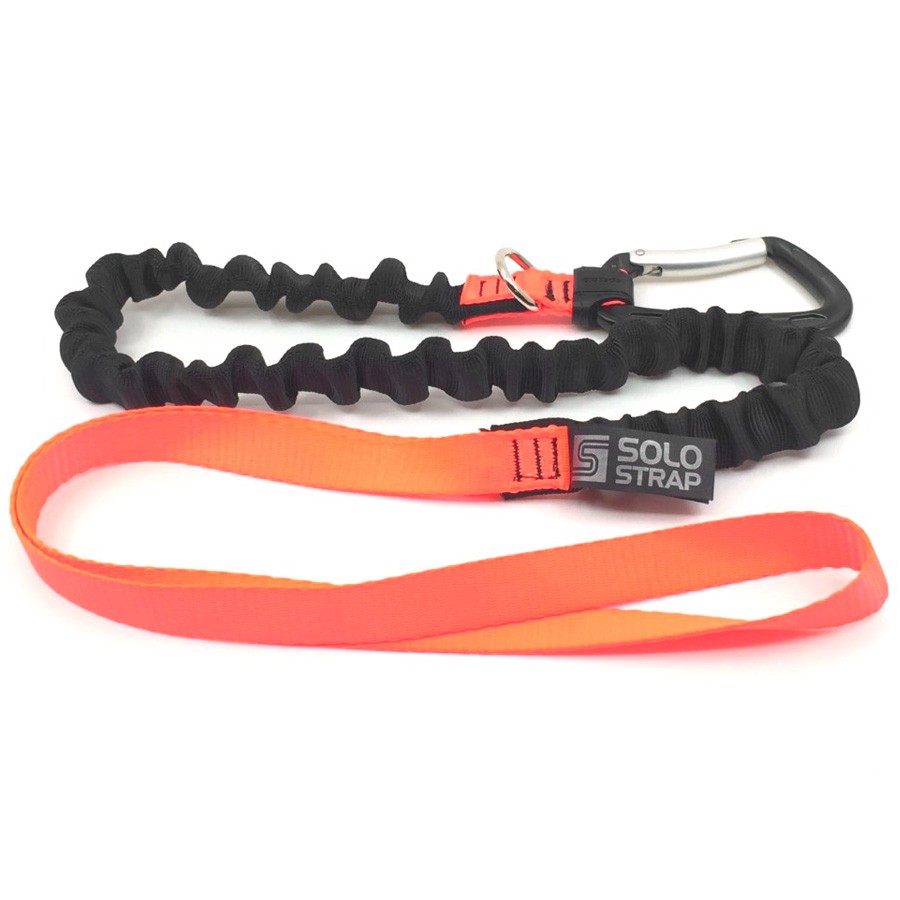
One of these self launching solo straps works very well & is super safe in conjunction with the method explained below. Well worth the 25 quid!
There are other launch methods of self launching, such as a drag launch and a drift launch, though I wouldn’t recommend these as they are not as controlled, and pose a greater risk to you, others and perhaps most importantly, your kite!
Landing
As with launching, there are many ways of doing this, though I would recommend the following technique as it has worked well for me in the past. Onward with How To self launch & self land while kitesurfing solo.
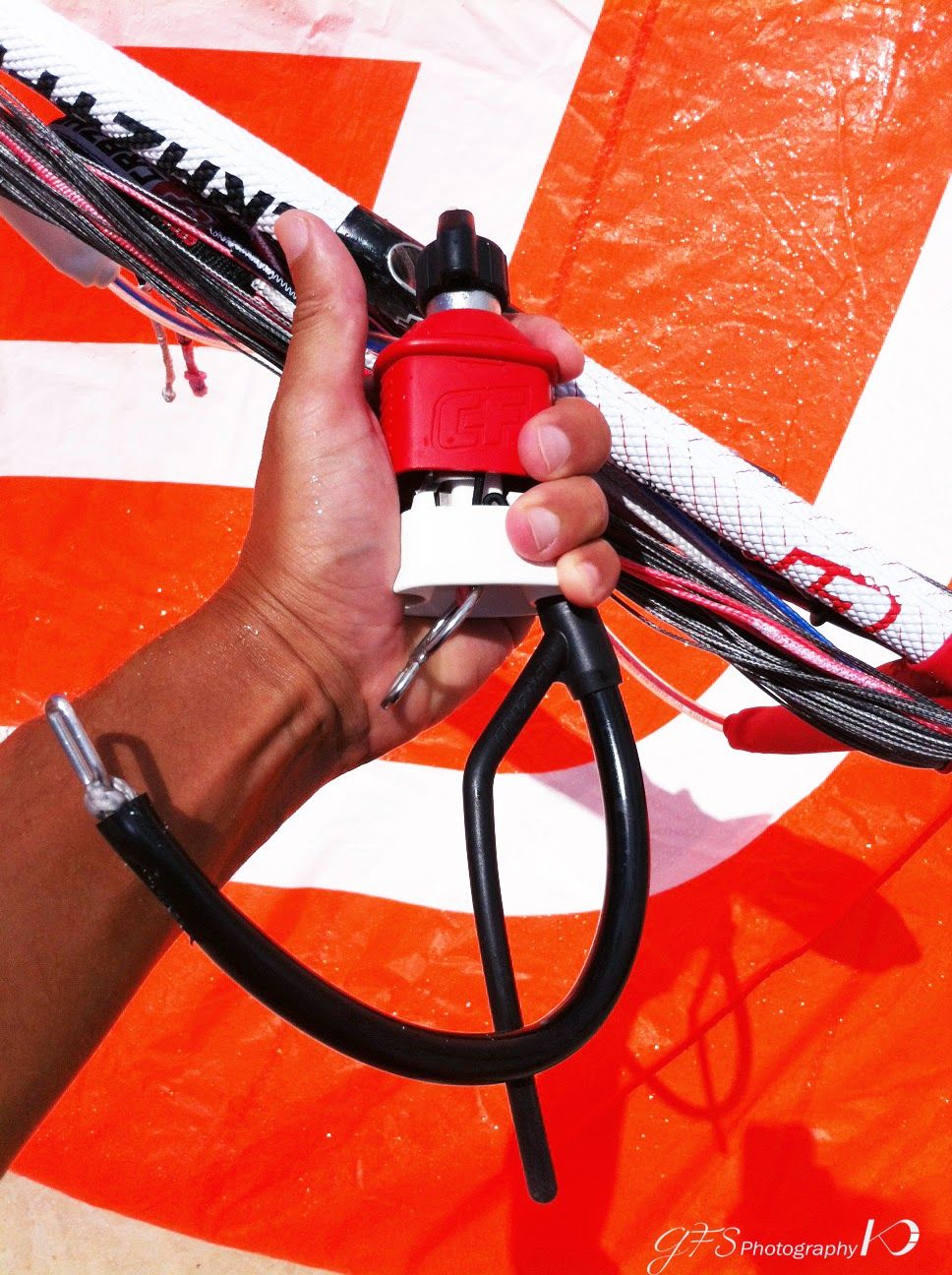
- Exhaust yourself with an exhilarating session and make your way in; your children may wish to see you, or your other half may have finished their book.
- Once on the beach or shallows and in a good place to land, slowly bring the kite to settle on the beach as far way from any hazards as possible, and pull your primary release. It is good to practice pulling this so you know how to do it, and what will happen when an occasion calls for it.
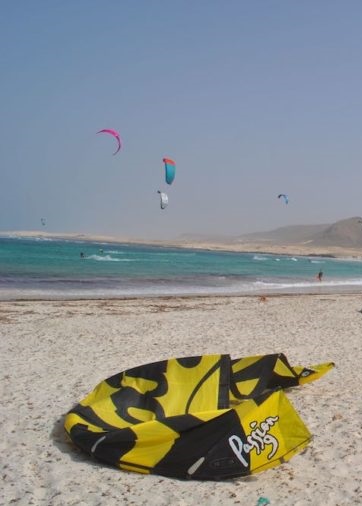
- The kite will now either settle to the sand, or it may flip upside down and go into the air. It cannot power up as your safety has been pulled, and will come to settle on the sand.
- Pulling in your safety line as you go, walk over to the kite, and begin putting your gear way. Make sure you reset your lines before wrapping them up to avoid frustration for your next session, and remember to give your lines a good rinse in fresh water before you put them away. More info here –
We would only attempt this type of solo land in up to 15 knots, in any winds stronger than this it’s advisable to perform a deep water pack down. This is an emergency procedure that every kitesurfer should know, and self landing is a great opportunity to practice this on a more regular basis. Check out this video for an explanation on how to perform it.
Post Landing
The final method of solo landing is to do the opposite of the self launch as mentioned above, using a secure attachment and a strap. The reason we’ve not used this as the preferred method is that you need a strap that can be left in place while you’re out riding, as it’s too dangerous to try and wrap your leash or strap around the post while flying a kite. However, if it is in place then you can go through the steps of the solo launch (but backwards) for a safe and secure self land. This is where the solo strap is very helpful
So hopefully this will answer the question how to self launch & self land while kitesurfing solo. Remember, be patient, don’t rush, and give yourself plenty of room. Stay safe.
Further Reading
